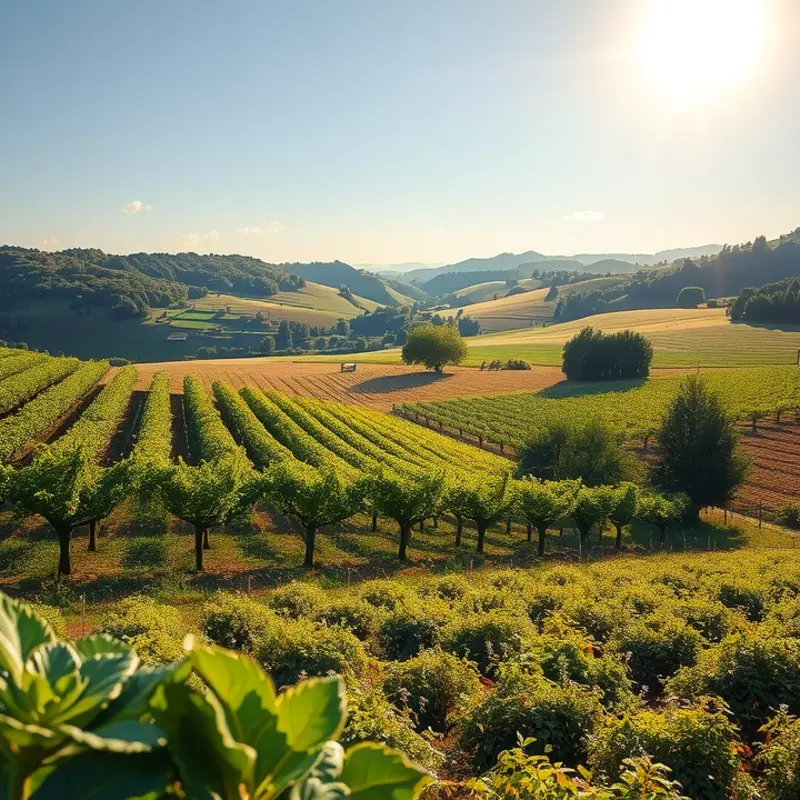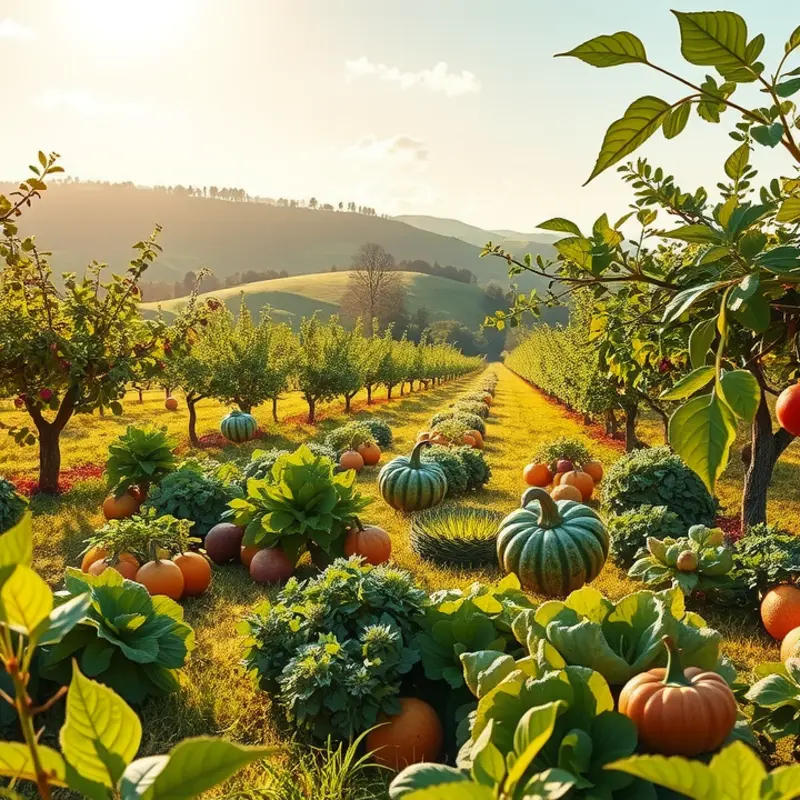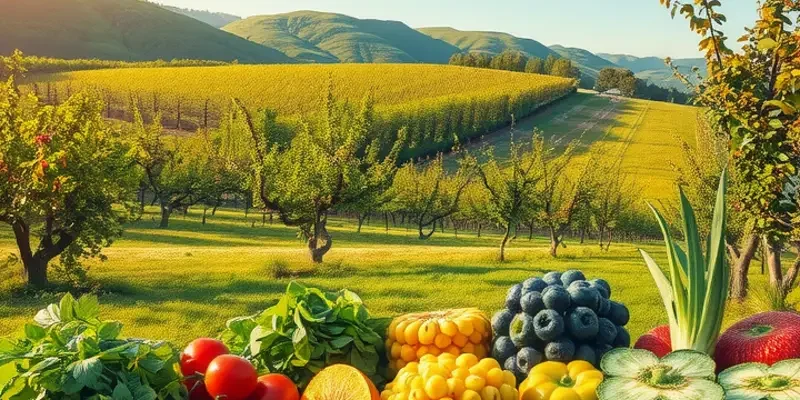Understanding eco-friendly food labeling is essential for anyone looking to minimize their impact on the environment. This guide provides practical tips on how to effectively store food, reduce waste, and enhance food management practices right in your own kitchen. With simple steps, you can embrace sustainability while keeping your pantry organized and clutter-free.
Understanding Eco-friendly Food Labels

Navigating the world of eco-friendly food labels can be a transformative step towards a more sustainable lifestyle. These labels not only guide consumers towards healthier eating habits but also support the broader movement towards reducing waste and promoting safe food storage practices. Recognizing the key certifications is crucial in selecting truly sustainable options.
The USDA Organic label is one of the most recognized eco-friendly certifications. This label ensures that the food was grown without synthetic fertilizers, pesticides, and genetically modified organisms. One of the main benefits of choosing organic is the reduced exposure to chemicals that can remain in conventionally grown produce. Additionally, organic farming practices often emphasize rotative cropping and composting, which help maintain soil health and promote biodiversity.
Another important label to consider is Non-GMO Project Verified. This label assures that the product is made without genetically modified organisms. By choosing non-GMO products, consumers support agricultural biodiversity, which is critical for food security. This label also backs sustainable food choices, encouraging a diversified intake of natural foods that better align with ecological cycles.
Fair Trade Certified products focus on ensuring fair prices and ethical treatment for farmers and workers in developing countries. While this may not directly impact waste reduction, fair trade practices encourage sustainable farming methods and contribute to community development funds that often support environmental improvements.
Seeking labels promoting sustainability can also lead to improved food storage advice and less waste at home. For instance, some products include symbols or text indicating optimal storage conditions which help preserve the quality and longevity of food. A detailed understanding of proper storage conditions can be found in guides such as storing vinegar to reduce kitchen waste.
To make informed decisions, it’s necessary to be mindful of not only what these certifications guarantee but also where your food comes from. Look for locally sourced certifications, which support local economies and require less transport, thereby reducing carbon footprints.
When shopping, consider creating a checklist of key eco-friendly labels that align with your sustainability goals. By doing so, you not only support better farming practices but also contribute to the growing demand for environmentally responsible products. Remember, every purchase is a vote for the kind of world you want to live in.
Finally, being an eco-conscious consumer involves constant learning and adapting. The labels discussed here represent significant steps towards sustainability, but always be on the lookout for new certifications as innovations in eco-friendly farming and production continue to evolve. By staying informed, you can ensure that your food choices remain aligned with your personal and environmental values.
Practical Strategies for Food Storage and Waste Reduction

Storing food efficiently and reducing waste are pillars of eco-friendly living. One of the most effective strategies involves using airtight containers. These containers preserve the freshness of dry goods like grains, nuts, and flour while preventing exposure to moisture and pests. When storing in airtight containers, consider labeling them with purchase dates to ensure optimal use and adherence to the FIFO method.
FIFO—First In, First Out—is a storage principle that helps reduce waste significantly. By organizing food items so that older products are used first, you prevent spoilage and unnecessary waste. This system works well in the refrigerator and pantry alike, where items can be easily overlooked.
Proper refrigeration techniques are crucial for eco-friendly food management. Keep your refrigerator organized by grouping similar items together. Ensure frequently used ingredients are easily accessible, and less-used items are stored in the back. This practice not only saves energy by reducing how long the fridge door stays open but also keeps foods fresh longer. Adjust your refrigerator’s temperature to below 5°C (41°F) and freezer to -18°C (0°F) for optimal food preservation.
Meal planning is another cornerstone of sustainable living. By planning your meals weekly, you can purchase only what you need, reducing unnecessary purchases that might lead to waste. Effective meal planning can also incorporate ingredient pairing methods to augment variety without increasing inventory. For more on this, explore ingredient pairing methods strategies that elevate your kitchen efficiency.
Consider employing food preservation methods such as freezing, pickling, and dehydrating. Freezing is an excellent way to maintain the nutritional value of fruits and vegetables while extending their usability. Blanch vegetables before freezing to halt enzymatic processes, thereby preserving nutrients, color, and texture.
Pickling can be a delightful form of preservation, especially for garden produce. Vinegar, herbs, and spices not only enhance flavor but also increase shelf life. Dehydrating is another effective method, particularly useful for fruits, vegetables, and herbs. Removing moisture significantly extends shelf life while maintaining flavor potency.
Optimizing the resources in your kitchen involves mindful storage and strategic preservation. Each action, from adjusting your fridge settings to organizing your pantry, has a cumulative impact on waste reduction and sustainability. By following these strategies, you contribute to a more eco-friendly household and a healthier planet.
Final words
Adopting eco-friendly food labeling can substantially improve how you manage food at home. By understanding these labels, you can make informed purchasing decisions that reduce carbon footprints and promote sustainability. Practicing effective food storage techniques not only keeps your food fresh but also minimizes unnecessary waste. Integrating these tips into your daily routines allows for a positive transition toward a more sustainable lifestyle. Remember, each small change contributes to a larger impact on our environment, and your efforts matter.







